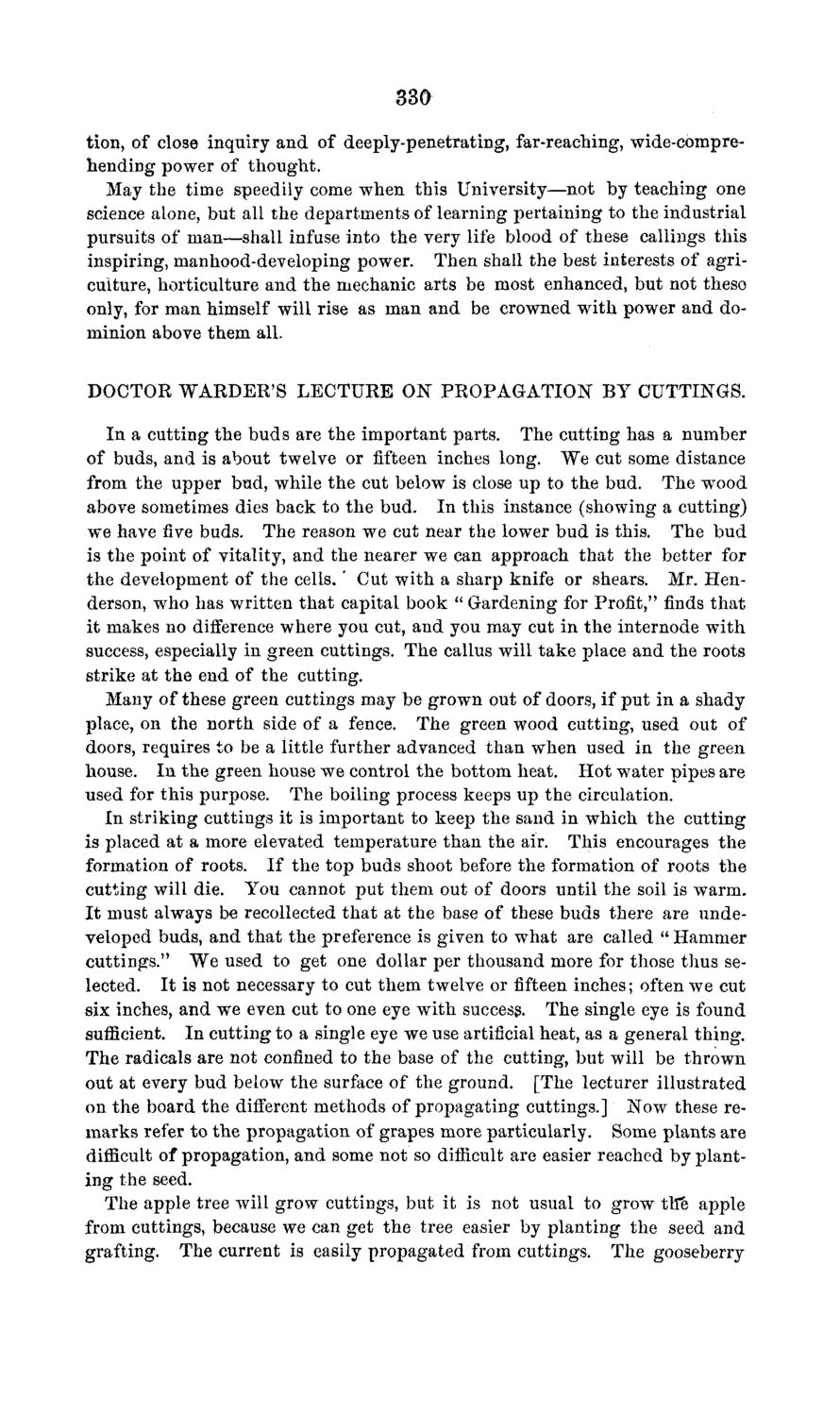| |
| |
Caption: Board of Trustees Minutes - 1869
This is a reduced-resolution page image for fast online browsing.

EXTRACTED TEXT FROM PAGE:
330 tion, of close inquiry and of deeply-penetrating, far-reaching, wide-comprehending power of thought. May the time speedily come when this University—not by teaching one science alone, but all the departments of learning pertaining to the industrial pursuits of man—shall infuse into the very life blood of these callings this inspiring, manhood-developing power. Then shall the best interests of agriculture, horticulture and the mechanic arts be most enhanced, but not theso only, for man himself will rise as man and be crowned with power and dominion above them all. DOCTOR WARDER'S LECTURE ON PROPAGATION BY CUTTINGS. In a cutting the buds are the important parts. The cutting has a number of buds, and is about twelve or fifteen inches long. We cut some distance from the upper bud, while the cut below is close up to the bud. The wood above sometimes dies back to the bud. In this instance (showing a cutting) we have five buds. The reason we cut near the lower bud is this. The bud is the point of vitality, and the nearer we can approach that the better for the development of the cells.' Cut with a sharp knife or shears. Mr. Henderson, who has written that capital book " Gardening for Profit," finds that it makes no difference where you cut, and you may cut in the internode with success, especially in green cuttings. The callus will take place and the roots strike at the end of the cutting. Many of these green cuttings may be grown out of doors, if put in a shady place, on the north side of a fence. The green wood cutting, used out of doors, requires to be a little further advanced than when used in the green house. In the green house we control the bottom heat. Hot water pipes are used for this purpose. The boiling process keeps up the circulation. In striking cuttings it is important to keep the sand in which the cutting is placed at a more elevated temperature than the air. This encourages the formation of roots. If the top buds shoot before the formation of roots the cutting will die. You cannot put them out of doors until the soil is wTarm. It must always be recollected that at the base of these buds there are undeveloped buds, and that the preference is given to what are called " Hammer cuttings." We used to get one dollar per thousand more for those thus selected. It is not necessary to cut them twelve or fifteen inches; often we cut six inches, and we even cut to one eye with succesg. The single eye is found sufficient. In cutting to a single eye we use artificial heat, as a general thing. The radicals are not confined to the base of the cutting, but will be thrown out at every bud below the surface of the ground. [The lecturer illustrated on the board the different methods of propagating cuttings.] Now these remarks refer to the propagation of grapes more particularly. Some plants are difficult of propagation, and some not so difficult are easier reached by planting the seed. The apple tree will grow cuttings, but it is not usual to grow the apple from cuttings, because we can get the tree easier by planting the seed and grafting. The current is easily propagated from cuttings. The gooseberry
| |